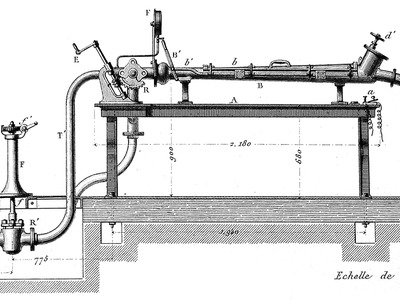Aktivitätenlisten
Mediendateien
Verknüpfte Aktivitäten
- Techniktransfer zwischen New York, Paris und Wien, Das Projekt der pneumatischen Leichenbeförderung zum Wiener Zentralfriedhof von 1874

- „Der ‚vollkommenen‘ Welt um einen großen Schritt näher“, Die Rohrpost am Arbeitsplatz in fünf Darstellungen

- Zukunftsphantasien des 19. Jahrhunderts

- Rohrpost: Zur Kulturgeschichte einer bürokratischen Technik

- Robida in der Realität, Kommunikation mit Luftdruck – Das Wiener Rohrpostsystem

- Ware Zukunft, Erzählung und Kommerzialisierung von Fortschrittsdenken im 19. Jahrhundert

- Leichentransport im Tunnelsystem

- Futures & Options, Utopische Bildwelten des 19. Jahrhunderts am Beispiel der Wiener Rohrpost

- Technik, Kommerz und Totenkult, Die technische Vision der pneumatischen Leichenbeförderung zum Wiener Zentralfriedhof von 1874

- Anmerkungen zur Eroberung des Untergrunds, Der geplante pneumatische Leichentransport zum Wiener Zentralfriedhof

Veröffentlicht von:
Florian Bettel |
Universität für Angewandte Kunst Wien |
Veröffentlicht am: 09. Mai 2022, 11:09 |
Geändert am: 26. Januar 2023, 13:16









